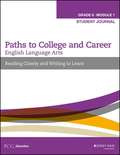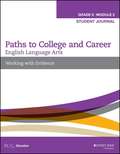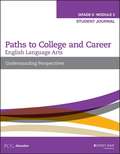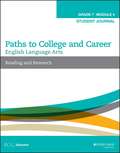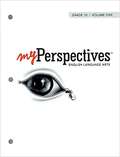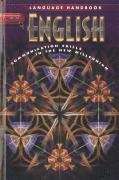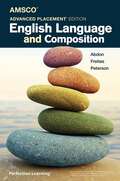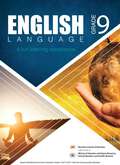- Table View
- List View
English Language Arts Common Core, Volume 2
by Grant Wiggins Jeff Anderson Arnetha F. BallNIMAC-sourced textbook
English Language Arts Instruction [Grade] 5 (Ready Florida LAFS)
by John Ham Anne Cullen Melissa Brown Rob Hill Susan James William KelleherNIMAC-sourced textbook
English Language Arts, Activity Book 2
by Dale-Marie Bryan Alane Gernon-Paulsen Amy LosiNIMAC-sourced textbook
English Language Arts, Grade 6 Module 1: Reading Closely and Writing to Learn Student Journal
by Pcg Education StaffStudent Journal to accompany Paths to College and Career, English Language Arts, Grade 6, Module 1.
English Language Arts, Grade 6 Module 2: Working With Evidence, Student Journal
by Pcg Education StaffStudent Journal to accompany Paths to College and Career, English Language Arts, Grade 6, Module 2.
English Language Arts, Grade 6 Module 3: Understanding Perspectives, Student Journal
by Pcg Education StaffStudent Journal to accompany Paths to College and Career, English Language Arts, Grade 6, Module 3.
English Language Arts, Grade 7 Module 4: Reading and Research Student Journal
by Public Consulting Group StaffStudent Journal to accompany Paths to College and Career, English Language Arts, Grade 7, Module 4.
English Language Arts, Level G (Measuring Up to the California Content Standards)
by Jasper JonesThe book will help your child to learn the California Content Standards and prepare for all English language arts exams.
English Language Arts, [Grade 10]: Volume One (myPerspectives)
by Prentice HallmyPerspectives™ English Language Arts is a student-centered learning environment where you will analyze text, cite evidence, and respond critically about your learning. You will take ownership of your learning through goal-setting, reflection, independent text selection, and activities that allow you to collaborate with your peers.
English Language Development, Language Development Practice Book, Grade 1
by Macmillan Mcgraw-HillNIMAC-sourced textbook
English Language Development, Language Development Practice Book, Grade 2
by Macmillan Mcgraw-HillNIMAC-sourced textbook
English Language Development, Language Development Practice Book, Grade 3
by Macmillan Mcgraw-HillNIMAC-sourced textbook
English Language Development, Language Development Practice Book, Grade 4
by Mcgraw-Hill Companies Macmillan IncNIMAC-sourced textbook
English Language Development, Language Development Practice Book, Grade 5
by Macmillan Mcgraw-HillNIMAC-sourced textbook
English Language Development, Language Development Practice Book, Grade 6
by Macmillan Mcgraw-HillNIMAC-sourced textbook
English Language Development, Language Development Practice Book, Kindergarten
by Macmillan Mcgraw-HillNIMAC-sourced textbook
English Language Development, Wonders, California Content Reader, Grade 5
by Macmillan Mcgraw-HillNIMAC-sourced textbook
English Language Handbook Level 1: Communication Skills in the New Millennium
by J. A. Senn Carol Ann SkinnerThis Handbook aims at improving the English Language skills, particularly communication skills.
English Language and Composition, AMSCO® Advanced Placement® Edition
by Lauren Peterson Brandon Abdon Timothy FreitasNIMAC-sourced textbook
English Language: A Fun Learning Experience class 9 - MIE
by Mauritius Institute of EducationThe Grade 9 English Textbook is aligned with the National Curriculum Framework (2016) and the English Teaching and Learning Syllabus (2017), adhering to the Nine-Year Continuous Education policy. It builds on competencies from primary levels and Grades 7-8, aiming to enhance English language proficiency. The textbook encompasses communication skills, reading comprehension with diverse text types, enjoyable reading segments, writing activities emphasizing text variation, vocabulary development, and grammar instruction for effective communication. Teaching tips are included, providing flexibility for educators. Emphasizing student autonomy, the textbook encourages pleasure reading, offers post-reading activities, and aims to enrich the learning experience for both educators and students.
English Level 3
by Shane Templeton Robert Rueda Tina Saldivar Lynne Shapiro C. Ann Terry Catherine Valentino Shelby A. Wolf3rd Grade Language Arts textbook

